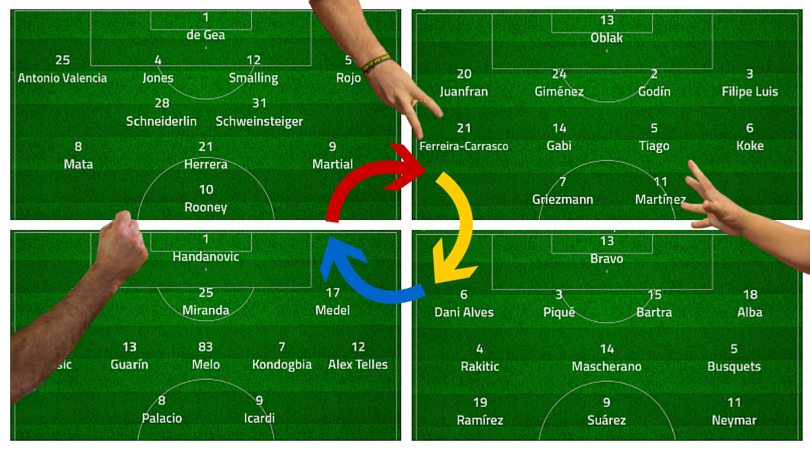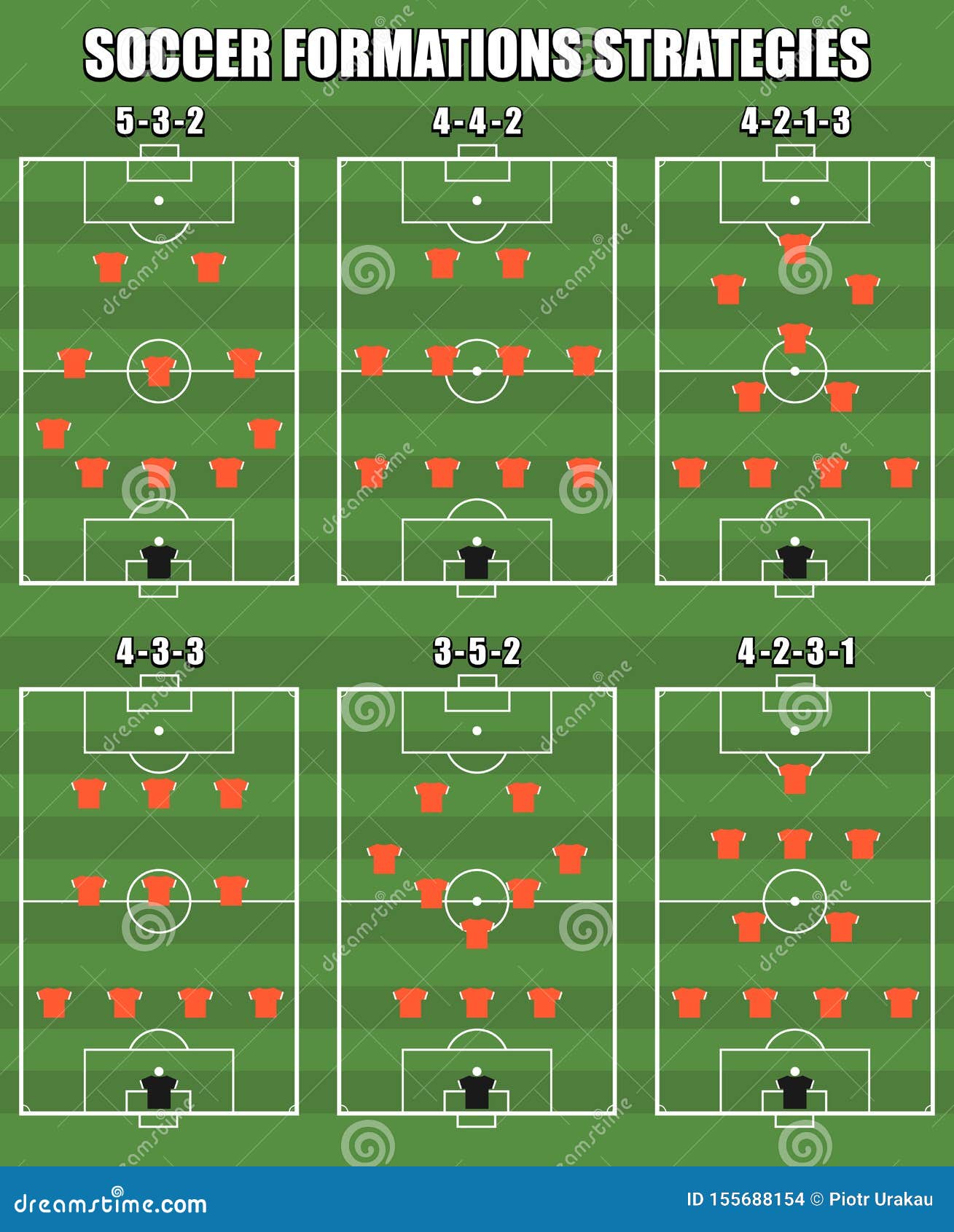“Football Tactics Popular in South Africa
Related Articles Football Tactics Popular in South Africa
Football Tactics Popular in South Africa

Football in South Africa is a passionate and dynamic affair, reflecting the country’s diverse culture and sporting heritage. Over the years, the tactical landscape of South African football has evolved, influenced by global trends, local talent, and the unique challenges of the domestic league. This article delves into some of the popular football tactics employed in South Africa, examining their characteristics, strengths, weaknesses, and impact on the game.
1. The Traditional 4-4-2 Formation:
The 4-4-2 formation is a classic and enduring tactical system that has been a staple of South African football for decades. Its simplicity, balance, and adaptability have made it a popular choice for coaches at all levels of the game.
Characteristics:
- Defensive Solidity: The 4-4-2 provides a solid defensive base with two banks of four players, making it difficult for opponents to penetrate the central areas.
- Width and Crossing: The two wide midfielders provide width and crossing ability, allowing for attacking opportunities from the flanks.
- Striking Partnership: The two strikers can complement each other, with one playing as a target man and the other as a more mobile and creative player.
- Central Midfield Battle: The two central midfielders must be disciplined and hardworking, as they are responsible for winning the ball back, controlling the tempo of the game, and supporting both the defense and attack.
Strengths:
- Defensive Stability: The 4-4-2 is well-organized and difficult to break down, making it a good choice for teams that prioritize defensive solidity.
- Simplicity and Familiarity: The formation is easy to understand and implement, making it a good choice for teams with limited training time or resources.
- Adaptability: The 4-4-2 can be adapted to different playing styles, from a defensive counter-attacking approach to a more attacking and possession-based approach.

Weaknesses:
- Lack of Creativity: The 4-4-2 can be predictable and lack creativity in attack, especially if the wide midfielders are not particularly skillful or inventive.
- Central Midfield Overload: If the opposition plays with three central midfielders, the two central midfielders in the 4-4-2 can be easily outnumbered and overrun.
- Reliance on Wing Play: The 4-4-2 can be overly reliant on wing play, making it vulnerable to teams that defend well in wide areas.
2. The Modern 4-2-3-1 Formation:
The 4-2-3-1 formation has gained popularity in South African football in recent years, as coaches seek to implement a more modern and flexible tactical system.
Characteristics:
- Defensive Midfield Pivot: The two defensive midfielders provide a screen in front of the defense, protecting the back four and winning the ball back.
- Attacking Midfield Trio: The three attacking midfielders play behind the striker, providing creativity, flair, and goal-scoring threat.
- Lone Striker: The lone striker must be strong, mobile, and clinical, as they are responsible for leading the line and scoring goals.
- Fluid Movement: The 4-2-3-1 encourages fluid movement and interchanging of positions, making it difficult for opponents to track and mark players.
Strengths:
- Attacking Versatility: The 4-2-3-1 provides a good balance between attack and defense, allowing teams to control possession, create chances, and score goals.
- Creative Midfield: The three attacking midfielders can unlock defenses with their skill, vision, and passing ability.
- Defensive Stability: The two defensive midfielders provide a solid defensive base, protecting the back four and winning the ball back.
Weaknesses:
- Reliance on Attacking Midfielders: The 4-2-3-1 can be overly reliant on the attacking midfielders, making it vulnerable if they are not in form or are well-marked.
- Lone Striker Isolation: The lone striker can become isolated if the team does not provide adequate support or service.
- Defensive Vulnerability: The 4-2-3-1 can be vulnerable to counter-attacks if the defensive midfielders are not disciplined or if the team loses possession in dangerous areas.
3. The Possession-Based 4-3-3 Formation:
The 4-3-3 formation is a popular choice for teams that prioritize possession-based football, seeking to control the game and dominate their opponents.
Characteristics:
- Central Midfield Trio: The three central midfielders are responsible for controlling possession, dictating the tempo of the game, and supporting both the defense and attack.
- Pace and Width: The two wingers provide pace and width, stretching the opposition defense and creating opportunities for crosses and cutbacks.
- High Pressing: Teams that play with a 4-3-3 often employ a high pressing strategy, seeking to win the ball back in the opposition’s half and create scoring opportunities.
- Fluid Movement: The 4-3-3 encourages fluid movement and interchanging of positions, making it difficult for opponents to track and mark players.
Strengths:
- Possession Dominance: The 4-3-3 allows teams to control possession and dictate the tempo of the game, tiring out the opposition and creating scoring opportunities.
- Attacking Threat: The two wingers and striker provide a constant attacking threat, stretching the opposition defense and creating opportunities for crosses, cutbacks, and through balls.
- High Pressing: The high pressing strategy can force the opposition into mistakes and create scoring opportunities.
Weaknesses:
- Defensive Vulnerability: The 4-3-3 can be vulnerable to counter-attacks if the central midfielders are not disciplined or if the team loses possession in dangerous areas.
- Reliance on Wingers: The 4-3-3 can be overly reliant on the wingers, making it vulnerable if they are not in form or are well-marked.
- Central Midfield Overload: If the opposition plays with four central midfielders, the three central midfielders in the 4-3-3 can be easily outnumbered and overrun.
4. The Counter-Attacking 5-3-2 Formation:
The 5-3-2 formation is often employed by teams that prioritize defensive solidity and counter-attacking football, seeking to absorb pressure and hit their opponents on the break.
Characteristics:
- Defensive Wall: The five defenders provide a solid defensive wall, making it difficult for opponents to penetrate the central areas.
- Central Midfield Trio: The three central midfielders are responsible for winning the ball back, protecting the defense, and launching counter-attacks.
- Striking Partnership: The two strikers can complement each other, with one playing as a target man and the other as a more mobile and creative player.
- Quick Transitions: The 5-3-2 relies on quick transitions from defense to attack, with the midfielders and strikers looking to exploit space in behind the opposition defense.
Strengths:
- Defensive Solidity: The 5-3-2 is extremely difficult to break down, making it a good choice for teams that prioritize defensive solidity.
- Counter-Attacking Threat: The 5-3-2 can be very dangerous on the counter-attack, with the midfielders and strikers looking to exploit space in behind the opposition defense.
- Compact Shape: The 5-3-2 maintains a compact shape, making it difficult for opponents to find space and create chances.
Weaknesses:
- Lack of Creativity: The 5-3-2 can be predictable and lack creativity in attack, especially if the strikers are not particularly skillful or inventive.
- Defensive Mentality: The 5-3-2 can encourage a defensive mentality, making it difficult for the team to take the initiative and control the game.
- Reliance on Counter-Attacks: The 5-3-2 can be overly reliant on counter-attacks, making it vulnerable to teams that defend deep and deny space in behind.
Conclusion:
The tactical landscape of South African football is constantly evolving, with coaches adopting and adapting different formations and strategies to suit their players and their opponents. While the 4-4-2 remains a popular choice, the 4-2-3-1, 4-3-3, and 5-3-2 formations are also gaining traction, reflecting a growing emphasis on modern and flexible tactical systems. As South African football continues to develop, it will be interesting to see how these tactics evolve and how new tactical innovations emerge.

